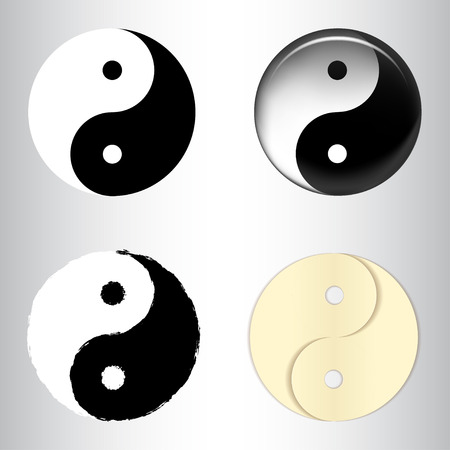1. Understanding Chi in Modern American Homes
When it comes to feng shui, the idea of “chi”—also known as energy flow—is central to how spaces affect our daily lives. In modern American homes, especially those with open floor plans and contemporary design styles, understanding how chi moves through entryways and adjoining spaces is key to creating a harmonious dining room.
What Is Chi?
Chi (pronounced “chee”) refers to the invisible life force or energy that flows through every environment. In traditional Chinese culture, good chi brings health, happiness, and prosperity. When applied to American homes, chi can be thought of as the way people, light, and air move throughout your living space.
Open Floor Plans and Energy Flow
Many new American homes feature open layouts where the entryway, living area, kitchen, and dining room are visually connected. This modern approach has both advantages and challenges for chi:
| Open Floor Plan Element | Impact on Chi |
|---|---|
| No Walls Between Rooms | Allows chi to flow freely but may cause energy to rush through too quickly |
| Large Entryways | Invites energy in but can make it harder to contain positive vibes in the dining area |
| Shared Lighting & Airflow | Creates a bright, lively atmosphere but may lead to overstimulation if not balanced |
Contemporary Design Aesthetics & Chi
Contemporary American design often values minimalism—clean lines, uncluttered spaces, and lots of natural light. While this looks beautiful, its important to ensure that these features also support a gentle, steady flow of energy instead of letting it dissipate or become chaotic.
Key Considerations for Dining Room Chi:
- Entryway Placement: If your front door opens directly into the dining room or its adjoining space, consider how this might allow chi to rush past without settling.
- Furniture Arrangement: Open layouts require thoughtful furniture placement to guide energy into communal areas like the dining room rather than letting it escape out windows or doors.
- Transitions Between Spaces: Use rugs, lighting changes, or subtle dividers to define boundaries between entryways and dining zones while maintaining an open feel.
By keeping these factors in mind, you can create a modern American home where chi supports comfort and connection—especially around the dining table.
2. Entryways: The First Impression and Its Impact on Energy
Why Entryways Matter in Feng Shui
The entryway is more than just a door; it’s the gateway where energy enters your home. In American homes, the main entry often opens up to a foyer, hallway, or sometimes directly into an open living space. According to Feng Shui principles, the quality of energy—or chi—that flows through your entryway can have a direct impact on how vibrant and harmonious your dining room feels.
Location of the Entryway
The location of your front door sets the tone for how energy moves throughout your home. If the entryway leads straight to the dining room, positive chi can flow easily into this important gathering space. However, if the entryway is cramped or cluttered, it may block or scatter energy before it reaches the dining area. Ideally, you want an entry that gently guides guests—and good energy—toward the heart of your home.
Entryway Location and Chi Flow
| Entryway Location | Effect on Dining Room Chi |
|---|---|
| Direct path to dining room | Smooth energy flow, welcoming atmosphere |
| Long hallway or narrow foyer | Energy slows down, may feel disconnected |
| Cluttered or blocked entrance | Stagnant chi, less inviting for family & guests |
Size and Organization of the Entryway
In many American homes, entryways come in all shapes and sizes—from grand double doors with spacious foyers to compact mudrooms with storage benches. The size matters because a wide, open entry allows energy to enter freely, while a tight space can make chi feel squeezed or stuck.
- Spacious entry: Feels open and encourages movement toward the dining room.
- Small or crowded entry: Can create tension or blockages in energy flow.
- Well-organized entry: Helps maintain clear pathways for both people and positive vibes.
Tips for Enhancing Your Entryways Energy Flow
Simple Ways to Improve Chi at Your Homes Entrance
- Keep it tidy: Remove shoes, backpacks, and other clutter from walkways.
- Add light: Good lighting not only helps you see but also lifts the mood as you enter.
- Use inviting décor: A welcome mat or potted plant can make your entry warm and friendly.
- Avoid direct line of sight: If possible, avoid having your front door directly face the dining room table—use a screen or furniture arrangement to soften the view.
Quick Comparison: Entryway Features for Better Energy Flow
| Feature | Positive Effect | Negative Effect |
|---|---|---|
| Sufficient Space | Makes arrival comfortable; eases transition inside | Crowding makes guests feel unwelcome; blocks chi |
| Tidy Organization | Keeps energy moving smoothly into dining area | Clutter disrupts flow and creates stress |
| Pleasant Lighting & Décor | Lifts spirits upon entering; sets a happy tone for meals | Poor lighting feels cold; unwelcoming vibe lingers into dinner time |
The way you design and care for your home’s entryway has a big influence on how chi travels to your dining room. By paying attention to location, size, and organization, you help create a welcoming environment where everyone feels comfortable gathering around the table.

3. The Relationship Between Dining Rooms and Adjacent Spaces
In American homes, dining rooms are often connected to other spaces like the kitchen, living room, and hallways. The way these spaces are positioned around the dining room can have a big impact on the flow of energy, or chi, making meals more enjoyable and family gatherings more harmonious. Let’s look at how these relationships work and what you can do to create positive vibes in your dining area.
How Kitchens Affect Dining Room Chi
The kitchen is usually where food preparation happens, so it’s closely linked to the dining room. When the kitchen is too close or directly open to the dining space, energy can move too quickly between these areas. This may lead to rushed meals or even stress during dinner time. On the other hand, having a partial separation—like a half wall or decorative divider—can help slow down the chi, creating a more relaxed and comfortable atmosphere for eating.
Kitchen and Dining Room Arrangements
| Arrangement | Effect on Chi | Tips for Balance |
|---|---|---|
| Open concept (no barrier) | Fast-moving energy; can feel hectic | Add a rug, plants, or screen as subtle dividers |
| Partial wall/divider | Smoother chi flow; cozy ambiance | Use shelving or glass panels for light and separation |
| Separate rooms with doors | Stable energy; formal feel | Keep doors open during gatherings for connection |
The Living Room Connection
Many American homes feature an open layout where the living room and dining area share one large space. This arrangement encourages social interaction but can also make it harder to keep dining time focused and relaxing. If possible, use furniture placement—like positioning a sofa or sideboard—to gently define the two zones while keeping them visually connected.
Hallways and Entryways Impact
If there’s a hallway or entryway leading directly into your dining room, pay attention to how energy enters this space. A straight path from the front door to the dining table might cause chi to rush through too quickly, making meals feel unsettled. To slow things down, consider placing a piece of art, a console table, or plants along the hallway as a visual break before entering the dining area.
Quick Tips for Harmonizing Adjacent Spaces:
- Add soft lighting between rooms to create warmth.
- Use rugs to separate spaces without closing them off.
- Incorporate natural elements like plants or wooden decor for grounding energy.
- Avoid direct lines from entryways into the dining table; use angled furniture if needed.
By paying attention to how your dining room connects with nearby areas, you can encourage smoother chi flow and make every meal feel more welcoming and balanced in your home.
4. Practical Feng Shui Tips for American Entryways and Dining Areas
Furniture Placement for Smooth Energy Flow
Arranging your entryway and dining room furniture properly can make a huge difference in the flow of chi (energy) throughout your home. In American homes, the entryway often leads directly into open-plan living and dining spaces. To enhance positive energy:
- Keep pathways clear: Avoid placing side tables, shoe racks, or coat stands where people might bump into them as they enter. This helps chi move freely from the front door to the dining area.
- Dining table positioning: Place your dining table so it’s easily accessible but not directly in line with the front door. This prevents good energy from rushing out.
- Use area rugs: Define spaces with rugs, especially if you have an open floor plan. Choose round or oval rugs under the dining table to promote harmony.
Color Schemes that Attract Positive Chi
The right colors can make both your entryway and dining area feel inviting and balanced. Here are some feng shui-friendly ideas using classic American decor palettes:
| Area | Recommended Colors | Effect on Energy |
|---|---|---|
| Entryway | Soft blues, light greens, warm taupe, creamy white | Creates a welcoming and calm first impression |
| Dining Room | Earthy tones (beige, sage), muted yellows, terracotta, navy accents | Encourages appetite, conversation, and togetherness |
Using Mirrors to Enhance Light and Energy
- Entryway mirrors: Hang a mirror on a side wall in your foyer to reflect light and make the space appear larger. Avoid placing mirrors directly across from the front door, as this can bounce energy right back outside.
- Dining room mirrors: Position a mirror so it reflects the dining table; this is believed to double abundance and attract prosperity.
Lighting Tips for Vibrant Spaces
- Naturally bright entryways: Use glass panels in doors or sidelights to let sunlight in. If natural light is limited, add a stylish pendant light or sconces.
- Dimmable dining lights: Install a dimmer switch for your chandelier or overhead fixture above the dining table. Adjust lighting to create an uplifting mood for gatherings or a cozy ambiance for family dinners.
- Avoid harsh glare: Choose warm-toned bulbs and use lampshades or frosted covers to soften light, which helps maintain a peaceful energy flow between entry and dining areas.
Quick Reference Table: Feng Shui Enhancers for American Homes
| Element | Entryway Tip | Dining Area Tip |
|---|---|---|
| Furniture Arrangement | Avoid clutter near the door; use slim benches or cubbies for shoes & bags | Circular tables promote inclusiveness; keep chairs equal in number if possible |
| Color Palette | Pale neutrals for openness; add pops of color with art or flowers | Softer earth tones; accent walls with art reflecting nature or abundance |
| Mirrors & Lighting | No mirrors facing the door; maximize daylight; soft ceiling light fixtures at night | Add a mirror to reflect the table; use adjustable lighting for different moods |
With these practical feng shui tips tailored to American homes, you can easily create harmonious connections between your entryway and dining room—welcoming positive energy and making every meal more enjoyable.
5. Common Entryway and Dining Room Challenges in U.S. Homes
Typical Issues Affecting Chi Flow
Many American homes face unique challenges when it comes to maintaining harmonious chi between entryways and dining rooms. Two of the most common issues are cluttered entryways and open-concept layouts. Both can disrupt the flow of energy, impacting both comfort and dining experiences.
Cluttered Entryways
It’s typical for American families to use the front entry as a drop zone for shoes, coats, bags, and packages. While convenient, this habit can cause stagnant chi to accumulate, making it harder for positive energy to move into the heart of the home—including the dining room.
Open-Concept Layouts
The open floor plan is a hallmark of many modern U.S. homes, with few walls separating the entryway, living area, and dining space. While this design feels spacious, it can allow energy to rush through the home without settling in the dining area, leading to restlessness or a lack of connection during meals.
Common Problems and Feng Shui Solutions
| Issue | Description | Culturally Relevant Feng Shui Solution |
|---|---|---|
| Cluttered Entryway | Shoes, jackets, mail, and backpacks pile up near the door. | Create organized storage solutions such as baskets, cubbies, or benches with built-in compartments. Add a small table or console for keys and mail to keep surfaces tidy. |
| Direct Path from Front Door to Dining Area | Energy rushes straight from the entrance to the dining room without pausing. | Place a decorative rug or runner to slow energy flow. Use furniture like bookcases or screens (even open shelving) to subtly define spaces while keeping things airy. |
| Open-Concept Layout | Lack of clear boundaries between entryway and dining room leads to scattered chi. | Add area rugs under the dining table and at the entryway to visually separate zones. Consider hanging artwork or using lighting fixtures that give each space its own identity. |
| Poor Lighting at Entry or Dining Room | Dim or harsh lighting creates an unwelcoming atmosphere at transition points. | Use warm-toned bulbs and layered lighting (overhead, sconces, table lamps) to create a cozy ambiance. A statement pendant above the dining table draws attention and anchors energy. |
| No Clear Pathways | Furniture or belongings block movement between spaces. | Arrange furniture so there’s a clear walkway from the entryway to the dining area. Avoid placing large items directly in line with doors to let chi flow smoothly. |
Simple Tips for Everyday Harmony
- Keep entryways free of unnecessary clutter by donating unused items regularly.
- Add plants or fresh flowers near entrances to invite vibrant energy.
- If your dining room is visible from the front door, use a centerpiece like a bowl of fruit or flowers as a visual anchor that encourages chi to linger.
- Select décor that reflects your family’s personality—feng shui isn’t about copying tradition exactly but adapting principles in ways that feel authentic in your home.


